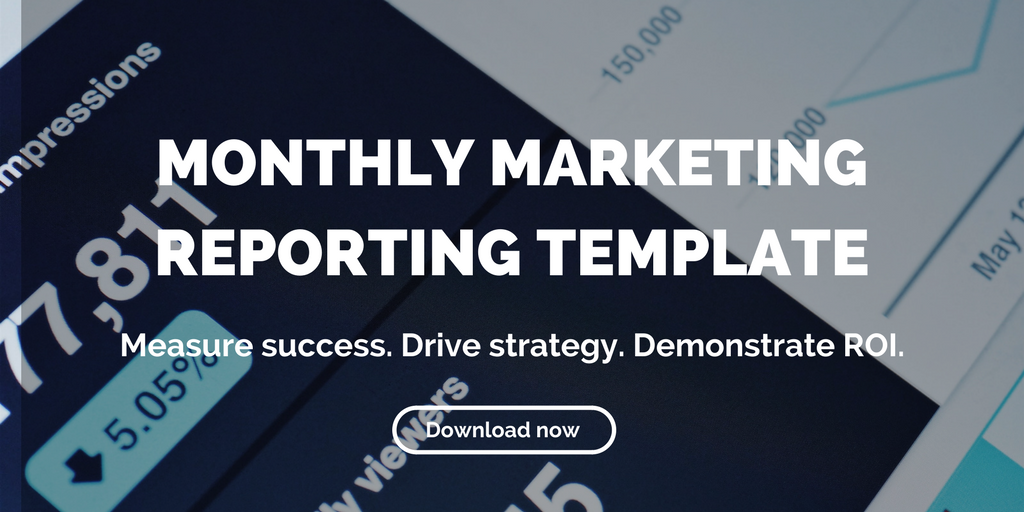Your search results for "Instagram"

Must-Know Social Media Strategies for Real Estate
Social media fits real estate marketing like a glove—but only if it’s done right. These social media strategies for real estate will help you effectively tap into new sources of leads.
Real estate is a people business. That’s why you should leverage a marketing tool that is also all about people: social media.
If you have not begun developing social media strategies for your real estate business, now is the time to get started.
Consider for a minute that in 2017, 81% of Americans had at least one social media profile. And the numbers are projected to continue skyrocketing: by 2020, 200 million people just in the U.S. are estimated to be on social media.
And it’s not just your high school friends, and distant relatives who are all over Facebook—professional marketers are tapping into social media in a big way. A recent survey of marketing professionals found that 41% plan to up their social media marketing budgets “significantly” in 2018.
Social media strategies for real estate make a lot of sense. But that doesn’t mean that all social media use is good for your brand—the key is to use it the right way. As Bubba Mills, chief executive officer of Corcoran Consulting & Coaching, puts it, “Done right, social media can increase your trips to the bank. Done poorly, it can drive you to the poor house.”
These three strategies will help you ensure that social media takes your real estate business to the bank.
1. Know what’s out there
You’ll often hear people talk about “social media” like it’s a monolithic entity. In fact, every social media platform is unique, and comes with its own set of challenges and advantages. As you think about what content to post, consider what platform will best serve your own social media strategies for real estate.
Facebook and Twitter are ever-popular, and nearly any content can be tweaked to make sense on these platforms. More visual platforms, like Instagram and Pinterest, are ideal for showcasing properties or visual content like a before/after feature. To connect with target businesses or other industry professionals, LinkedIn is likely your best bet.
2. Be a resource: a key social media strategy for real estate
We hardly need to tell you social media is a nexus for the best and worst. When your prospects scroll through their newsfeeds, they wade through a tremendous amount of useless information. Your goal should be to grab their attention with a standout topic, and keep that attention and interest by providing value to your audience.
“When you write your social media posts, think of yourself as a teacher, not a salesperson,” says Mills. “Educate with solid facts and materials readers can use.” Establishing yourself as a trusted resource ensures a lasting and fruitful relationship with your audience.
3. Keep your eye on the prize
As with any marketing endeavor, a crucial first step is a strategy. Social media marketing is no different. A clear, documented social media strategy for real estate, with measurable goals and a mechanism for collecting data on its effectiveness is crucial for success. In the end, it’s all about generating leads—but it’s important not to forget all the steps on the way to this overarching goal.
Used wisely, social media can help build your brand, engage your potential buyers and renters, generate leads, and establish your reputation as a trusted resource.
Related posts:
- 10 Social Media Statistics for Real Estate Marketers 2018
- A Visual Guide to Social Media Posting Frequency for Real Estate
- Social Media Can Be a Strategic Weapon in Real Estate Marketing
Your search results for "Instagram"
Our Services
Our Services We help developers, marketing firms, and property management companies modernize their real estate marketing. In short, we can manage everything from strategy development to execution — or whichever pieces you need off your plate so that you can focus on...Your search results for "Instagram"

Start Your Property’s Social Media Program in 6 Steps
When launching a property’s social media marketing program, make sure you’ve thought through strategy, content, and audience.
Social media marketing for real estate is a must-do. The reality is that’s where the average American is spending his/her free time — nearly 2 hours a day, according to a recent study. Using platforms like Facebook, Twitter, and YouTube to market your property, you can:
- engage potential buyers
- build brand awareness
- elevate brand position within the market
- decrease cost per lead
- increase occupancy or sales
- improve retention
- and more
Sounds great, right? But where do you start? Which platforms should you use? How will you ever convince your boss that this is a valuable use of your time?
Starting your property’s social media program can seem like an intimidating task, especially if company leadership is skeptical of the benefits. Here are six steps to launching a real estate social media program that will grow your business to its full potential.
6 steps to start your property’s social media program
1) Speak in the right terms.
Convincing management that you want your team to spend more time on social media to gain “followers” or get “shares” could be a hard sell — even though that kind of engagement is key in real estate sales and rentals. To win support, focus your argument around the factors that are most important to them. Lead generation, lead nurturing, conversions, sales, ROI, profits: this should be the vocabulary with which you approach this conversation.
2) Create a strategy — and put someone in charge.
Only 11% of companies without a documented content marketing strategy find their efforts to be successful, compared to 60% of companies with a strategy in place. And that number rises to 86% when the company designates someone to lead the strategy.
Develop a content marketing strategy — inclusive of social media — that aligns with your goals for the property (e.g., more visits to the website, increased occupancy, better retention rates). And whether someone on your team heads up execution or you outsource that responsibility, the leader should continually monitor analytics and tweak the strategy accordingly to ensure the property’s social media program is meeting the designated marks.
Which brings me to…
3) Determine which analytics to track.
In real estate social media, shares, likes, and impressions speak to your brand exposure, so they’re important to track. But it’s important that you’re looking at more than just these surface metrics. (Read more about so-called “vanity metrics” here.) Leads generated, conversion rates, sales, and ROI are going to tell you if your efforts are helping your bottom line. If you have a good, flexible strategy in place, these metrics will help you adjust your efforts to ensure you’re achieving your business objectives.
4) Develop quality content.
Twenty-seven million pieces of content are shared every day — and a large portion of it is crap. A social media presence could be pretty pointless unless you’re not using it in a way that your followers find valuable. Good, quality content is the alpha and the omega, the key to engaging your followers.
One of the biggest mistakes real estate marketers make is using social channels to push a blatant sales pitch. You’ll quickly lose your audience that way. Your property’s social media should be about engaging target buyers or tenants, building brand awareness, and offering valuable and interesting information.
5) Decide which channels are right for your business.
Who are you trying to reach, and what are you trying to tell them? These are good questions to ask when trying to determine which platforms will comprise your social media program. You need to know who your target buyer/tenant is, and you need to know what kind of information you’re going to offer them.
There’s a wealth of data out there about who uses which channels and when. Most social media platforms also have their own built-in analytics tools that can help you determine the best time for engagement with your followers.
Another thing to consider: You’ll want to choose channels that you’ll be able to maintain regularly and which play to your strengths. If you don’t have the time, skill, or interest in taking regular photographs of things around your property, for example, Instagram probably isn’t for you. Remember, you’ll likely want to work through several different channels to reach a maximum number of potential customers.
6) Follow your competitors.
Following your competitors is a great way to stay up to date on what they’re doing, especially if you don’t have a ton of time or money for competitive research. And when I say “follow,” I don’t mean “copy or imitate.” I mean subscribe to their blogs, engage with them on social media, and like and share their content that you find meaningful for your audience. This way, you become part of the local conversation happening online, and you know exactly what your potential buyers and tenants are seeing from (and how they’re reacting to) your competitors.
Related posts:
- The Metrics You Should Be Measuring in Real Estate Marketing
- 6 Marketing Tasks Real Estate Marketers Can Outsource
- Social Media Can Be a Strategic Weapon in Real Estate Marketing
Your search results for "Instagram"

Developing Your Real Estate Brand with Video Marketing
Here’s why video marketing is essential to developing your real estate brand and how to make video marketing work for you.
Highlights:
- A majority of marketing professionals already use video — 87% consider it one of their marketing tools
- Video marketing is an excellent way to bring a powerful, sales-driven message to life.
- A host of positive factors justify an extended effort into the creation of valuable video content.
It’s no secret that video marketing has an integral role to play in any well-rounded marketer’s toolkit. No matter what you’re selling — using videos as an avenue to create content, promote products and services, and connect with your audience is well-known to boost sales and increase brand awareness.
Perhaps the easiest way to illustrate the potential of video marketing lies in hard statistics. We’ve rounded up a few of the most notable ones here to drive home just how hungry consumers are for video content:
- 85% of web users in the U.S. watch video content online on a monthly basis
- As many as 54% of consumers indicate they want to see video content from brands they support
- A majority of marketing professionals already use video — 87% consider it one of their marketing tools
It’s evident that audiences love video — and savvy marketers have already caught on. Below, we’ve outlined how an effective video marketing strategy can help contribute to the development of your real estate brand. Whether you’re crunching numbers or considering your brand’s reach in a less tangible way, it’s virtually impossible to speak about marketing success without including video.
How Video Marketing Contributes to the Development of Your Real Estate Brand
Bringing your value proposition to life
Your value proposition helps paint a picture of how your services solve customers’ problems. This establishes relevancy. It’s also responsible for providing your audience with a quantified value, or an explanation of specific benefits that your brand delivers. Finally, it explains why clients should work with you instead of turning to your competition.
Video marketing is an excellent way to bring this powerful, sales-driven message to life. We can communicate much more quickly and effectively via video (which allows us to leverage visuals and audio) than through writing. Through video, you can show future clients exactly what they have to gain from working with you.
Increased brand awareness
Brand awareness is integral to business success. You want potential clients and customers to heavily associate your brand and properties with something positive, useful, or necessary — this not only positions you as an ideal choice when it comes time to get to work, but it ensures that your audience will be able to recall your existence later, too.
If you leverage video marketing properly, you can strengthen your brand message, promote your name, and increase brand awareness. Sticking to content that abides by, or expands upon, your value proposition helps make this easy to achieve.
Lower costs per lead
Marketing can get expensive fast. As price-per-lead creeps up, the monetary payoff of the effort you put in behind the computer screen or camera starts to nosedive. Video marketing makes for an ideal lead acquisition strategy because it has an exceptionally low cost-per-lead.
Other marketing methods like SEO, retargeting, and email marketing often run cheaper, but are not always as effective or take longer to pay off. Today’s consumers want their options laid out in front of them — not clogging up email inboxes or hiding five pages deep in search engine results pages.
No matter your reason for exploring your video marketing options, a host of positive factors justify an extended effort into the creation of valuable video content. Your clients and customers will love getting a more intimate view of your brand, while your sales and marketing teams will funnel their efforts into marketing that’s both engaging and profitable.
Related posts:
- 5 Effective Ways to Use Instagram for Your Luxury Real Estate Brand
- Infographic: Best Video Distribution Channels for Real Estate Marketing
- Paid Social Advertising: Why Your Property Should Invest in Lead Ads
Your search results for "Instagram"

Paid Digital Advertising: A Beginner’s Guide for Real Estate Marketers
Paid digital advertising can help accelerate your content marketing efforts so that your content gets in front of prospective buyers and renters faster than would happen organically.
We are strong believers in content marketing. Build it, and they will come — or, in content-marketing speak, publish quality content, and buyers will come to you. But, content marketing takes time to bear fruit. There’s not much you can do about that.
Except paid digital advertising.
By investing in paid digital advertising, you can boost the reach of your posts, display ads, and videos. Pair quality content with a comprehensive digital advertising strategy, and you will be in a position to drive more traffic, create more brand visibility, and sell or lease more properties.
Your peers understand this. Within the first quarter of 2017, Facebook, Instagram, Twitter, LinkedIn, Snapchat, and Pinterest saw a 61.5% increase in paid media spend. And that’s only going to increase through 2018.
So where do you start? Here are three places to get started in using paid digital advertising to help market your property.
3 paid digital advertising platforms
1) Display ads
Display ads are the paid advertisements that appear in front of users on website pages in the form of graphics. Unlike text-based ads, display advertising relies on elements such as images, audio, and video to communicate an advertising message. Display ads are commonly referred to as banner ads, but they don’t always take banner form. They can come in all shapes and sizes, and can appear anywhere on a webpage.
Benefits: Because digital ads are visual, they can be customized with your logo, message, images of properties, or an offer to help increase brand awareness. You have the ability to use graphics, video, and audio to really stand out and highlight your properties. Display ads also allow users the ability to target a specific audience. You control which sites they appear on, which geographic area they appear in, and which demographic or niche market they appear to — all valuable tools for the real estate marketer.
2) Sponsored social media posts
There are sponsored posts plus other ad opportunities like Facebook like campaigns, website click ads, and lead ads.
Social media is a natural place to begin if you’re looking to get into paid digital advertising, particularly for the real estate industry. A good starting point is Facebook. The social media giant’s social ad revenue was more than $9.16 billion in Q2 2017 alone. And it doesn’t stop there. Twitter brought in $548 million in social media advertising revenue in the same period, and Snapchat is expected to reach over $895.5 million in ad revenue in 2017.
More specifically, three of the most useful types of sponsored social media posts for real estate marketing are:
- Facebook Like Campaigns: These campaigns are aimed directly at increasing the number of likes for a Facebook page, targeting people who might be interested in your brand and the posts you share on Facebook.
- Facebook Website Click Ads: These are ads that point people on Facebook to your website, or even the listings for specific properties.
- Facebook Lead Ads: These ads allow users to request information, estimates, or newsletters without leaving Facebook. Requiring fewer steps of prospective leads increases conversion rates.
Benefits: Running paid social ads allows you to reach a large audience at a low cost. You pay based on the type of ad you’re running. For example, if you’re looking to drive brand awareness, you’ll incur a CPM (Cost Per 1,000 Impressions). And not only are the ads relatively inexpensive to run, they’re not expensive to create. You get all of this plus the ability to target your specific audience, reaching people that are interested in learning about the properties you have to offer.
3) Google AdWords
Google AdWords places your website as one of the top results on a search engine results page (SERP) when a user searches for certain keywords of your choice. When a user clicks the AdWords link or calls your business using that link, you incur a charge (pay-per-click). Otherwise, impressions are free.
Google’s most recent update involves changes to the so-called “3-pack,” or the listing of three related local businesses on a search results page. Many users rely on the 3-pack to discover businesses in their area that offer the products and services they are seeking. This is particularly helpful for users searching for local real estate. And real estate copanies get the benefit of many additional leads and investors when they appear in the 3-pack.
Benefits: The biggest benefit of Google AdWords is its speed. You appear in a top spot in a user’s search results, meaning you are one of the first things a user sees when searching for a specific location or property keyword. That’s another good point: Google AdWords allows you to focus on people who are searching for what you have to offer, so you don’t pay for a bunch of wasted impressions — particularly valuable in real estate marketing, where geography is key. AdWords also gives you real-time reports to track your ad’s success. A dashboard shows information related to each campaign, such as the ads clicked, keywords entered by website visitors, cost of clicks and much more.
Related posts:



